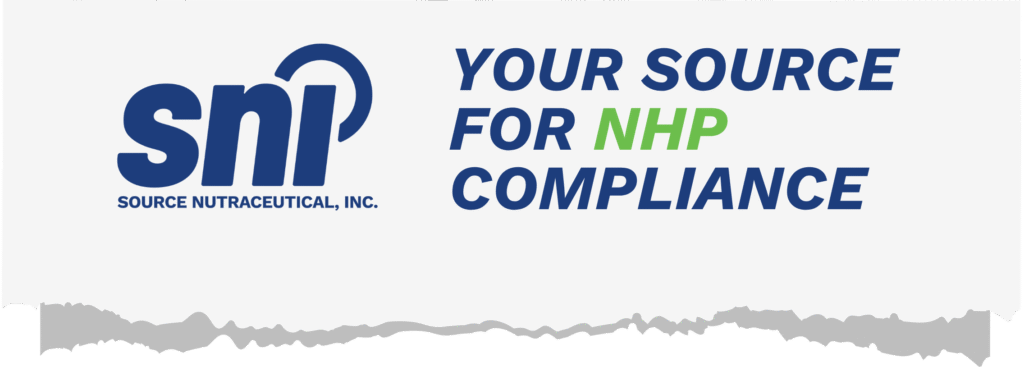Cutting red tape is at the heart of Health Canada and the Public Health Agency of Canada’s new regulatory modernization plan. In July 2025, the Government of Canada launched a federal Red Tape Review to address growing concerns that outdated, duplicative, and overly complex rules are slowing market access, discouraging innovation, and creating unnecessary costs for businesses. In response, Health Canada and the Public Health Agency of Canada introduced a comprehensive strategy with 42 initiatives designed to reduce administrative burden, streamline processes, and support faster access to safe, high-quality products.
This article explains the purpose and context of this initiative, how it builds on previous modernization efforts, and the five core themes that will drive these reforms. It also explores why cutting regulatory red tape is critical to strengthening Canada’s competitiveness while maintaining high public health and safety standards.
A Modernized Approach to Protect Health and Support Growth
Health Canada and the Public Health Agency of Canada oversee the safety of health products, food, and consumer goods in Canada. Their regulations protect the public but can also create administrative burdens when they are outdated, overly complex, or duplicative.
Recognizing the need for a more agile and responsive system, Health Canada and the Public Health Agency of Canada launched a government-wide Red Tape Review in July 2025. Their goal is to build a regulatory environment that safeguards public health while removing unnecessary barriers to business, trade, and innovation.
Broader Economic and Public Health Context
This initiative comes at a critical time for Canada’s health and life sciences sectors. Rapid global innovation, increasingly complex supply chains, and emerging public health threats demand regulatory systems that are both robust and adaptable. Modern, predictable regulatory frameworks can:
- Strengthen Canada’s competitiveness in biotechnology, life sciences, and health technology
- Support resilient supply chains and faster access to essential products
- Allow regulators to respond more quickly and effectively to public health risks
By reducing unnecessary administrative burden, Health Canada and the Public Health Agency of Canada are positioning Canada to remain competitive while continuing to protect the health and safety of people in Canada.
Rationale for the Initiative
Health Canada and the Public Health Agency of Canada launched their red tape reduction initiative in response to the Government of Canada’s 2025 federal Red Tape Review, which began in July 2025. This government-wide review aims to address long-standing stakeholder concerns. Businesses and industry groups have highlighted issues such as complex and paper-based processes, lengthy approval timelines, and unclear guidance, all of which slow market access, discourage innovation, and add costs without improving safety outcomes.
The initiative also reflects the need to keep pace with rapid global innovation, increasingly complex supply chains, and evolving public health priorities. Canada’s regulatory frameworks must remain strong but become more agile, risk-based, and internationally aligned to support economic competitiveness while protecting public health. By streamlining regulations, improving service delivery, and reducing unnecessary requirements, Health Canada and the Public Health Agency of Canada aim to create a more predictable and innovation-friendly regulatory environment that still maintains Canada’s high standards for safety and quality.
Prior Efforts and Differences in the New Approach
This red tape reduction initiative is not a departure from Health Canada and the Public Health Agency of Canada’s existing mandate but rather a continuation of their long-standing efforts to modernize Canada’s regulatory system. Both organizations have previously undertaken targeted regulatory reviews, adopted risk-based oversight approaches, strengthened international regulatory cooperation, and invested in digital tools to improve service delivery. These actions have aimed to remove barriers to innovation, accelerate access to safe products, and make regulatory processes more transparent and efficient.
What sets the current initiative apart is its broader scope and formal alignment with the Government of Canada’s 2025 Red Tape Review. Instead of isolated or sector-specific improvements, it introduces a coordinated plan with 42 concrete initiatives designed to systematically reduce outdated, duplicative, and overly complex regulatory requirements. In essence, it represents an accelerated and more comprehensive phase of Health Canada and the Public Health Agency of Canada’s ongoing commitment to create a regulatory system that is modern, risk-based, and supportive of innovation while safeguarding public health.
Examples of Initiatives in Action
To make the plan tangible, Health Canada and the Public Health Agency of Canada have highlighted several early and upcoming measures, including:
- Issuing an Exemption Order that delays certain natural health product labelling requirements to give businesses more time to comply
- Building new secure online portals for pest control product submissions and cosmetic notifications
- Providing guidance for machine learning-enabled medical devices to support innovation while ensuring safety
- Simplifying cannabis licensing, reporting, and packaging rules to reduce administrative complexity
- Repealing outdated Quarantine Regulations and modernizing the Food and Drug Regulations to eliminate duplication
These concrete actions show how cutting red tape can reduce burden without weakening oversight.
Five Key Themes Driving Red Tape Reduction
Health Canada and the Public Health Agency of Canada’s plan outlines 42 initiatives, including 12 completed or nearing completion and 30 more to be delivered over the next two years. These are grouped under five themes.
International Alignment and Trade Barrier Reduction
- Expanding joint product reviews with regulators in the United States, European Union, United Kingdom, Australia, and New Zealand
- Increasing reliance on trusted international decisions and mutual recognition agreements
- Easing cross-border regulatory friction to accelerate product access and strengthen supply chains
Improving Client Experience and Service Delivery
- Building digital portals for faster submissions and improved transparency
- Issuing clearer guidance, training, and modernized labels for regulated products
- Streamlining inspections and communications to reduce wait times and paperwork
Risk-Based Regulating
- Shifting resources from low-risk to high-risk products
- Reducing licensing burdens for low-risk facilities and products
- Implementing targeted terms and conditions on licences instead of broad restrictions
Streamlining Regulations and Simplifying Rules
- Consolidating overlapping or outdated regulations (e.g. cannabis, food additives, controlled substances, quarantine rules)
- Reducing reporting and licensing requirements that add unnecessary complexity
- Simplifying the Food and Drug Regulations to create a clearer, more predictable regulatory environment
Enabling New Products and Technologies
- Modernizing frameworks for clinical trials and new substances
- Issuing guidance on emerging technologies such as AI-enabled medical devices
- Supporting faster access to safe, innovative health products while maintaining oversight
Stakeholder Engagement and Transparency
This initiative reflects extensive consultation with industry, health professionals, and regulatory partners. It aligns with broader government-wide commitments to improve transparency and service delivery. Health Canada and the Public Health Agency of Canada have emphasized that they will continue engaging stakeholders as the 42 initiatives are implemented, ensuring regulatory reforms are informed by real-world experience and challenges.
Safeguarding Public Health While Reducing Burden
Cutting red tape does not mean lowering safety standards. The reforms focus on eliminating duplication, outdated rules, and unnecessary paperwork and not weakening oversight. High-risk products will continue to face rigorous requirements, while low-risk products will benefit from more streamlined processes. This risk-based approach ensures resources are concentrated where they have the greatest impact on protecting public health.
Why This Matters
By cutting red tape, Health Canada and the Public Health Agency of Canada aim to:
- Accelerate access to safe and innovative products for Canadians
- Reduce costs and administrative burden for businesses
- Strengthen Canada’s competitiveness in global markets
- Improve regulatory transparency, agility, and trust
These reforms represent a shift toward a more collaborative, risk-based, and innovation-friendly regulatory system that continues to uphold Canada’s high standards for health and safety.
Final Remarks
This red tape reduction agenda is not a one-time effort. Health Canada and the Public Health Agency of Canada plan to maintain ongoing consultation with industry and stakeholders while monitoring the outcomes of these 42 initiatives. Their long-term vision is a regulatory system that protects Canadians while supporting a thriving, innovative economy.

Want your natural health product to stand out (and sell) in Canada and beyond? Source Nutraceutical Inc. offers regulatory affairs, labelling and packaging compliance, quality assurance, and clinical trial services to give your product the competitive advantage. Reach out today to get started on a market entry plan tailored for your NHP.
💊 More about our services here.
💡 Compliance is easy with the right support!
📩 info@sourcenutra.com
⬇️ Send us a request for support or an introductory call
✷ The content on this website, including information presented in this post, is provided for general informational purposes only and does not constitute legal, regulatory, or professional advice. While efforts are made to ensure accuracy, laws and regulations vary by jurisdiction and may change over time. Readers should not rely on this information as a substitute for advice from qualified legal or regulatory professionals. We disclaim any liability for actions taken based on this content, and users are encouraged to seek guidance specific to their circumstances.




